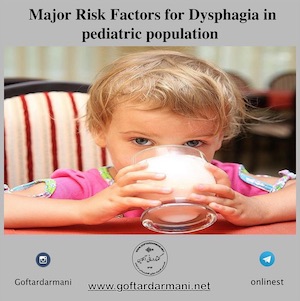
Major Risk Factors for Dysphagia in pediatric population
Major Risk Factors for Dysphagia in pediatric population
Survival rates continue to increase in the pediatric population as medical knowledge and technology improve. Many of these survivors, however, experience serious medical conditions likely to include feeding and swallowing disorders (Newman, 2000).
Arvedson and Brodsky, (2002), ASHA (2002), Kurjan, Newman (2000) and Swigert (1998) and others cite the following factors that may lead to feeding and swallowing disorders:
• premature birth;
• low birth weight;
• anatomic defects (e.g., due to congenital malformations, such as cleft palate, or resulting from
trauma or radiation);
• central nervous system abnormalities or injuries (e.g., neural tube defects; genetic syndromes;
cerebral palsy; pre-, peri- or post-natal trauma, such as stroke or traumatic brain injury);
• neuromuscular disorders (e.g., muscular dystrophy);
• intellectual disability;
• history of, or chronic pulmonary/respiratory impairments (e.g., secondary to heart or pulmonary
system deformities or malfunctions, abnormal muscle tone), which may cause aspiration on food
(including liquids);
• metabolic disorders;
• oral and upper digestive tract and/or food texture hypersensitivity (e.g., some children with autism;
secondary to use of nasogastric tube in some children); and
• dysphonia, especially related to vocal fold opening (abduction) and closing (adduction), such as
weakness (paresis) or paralysis in one or both vocal folds.
Reference: Guidelines for feeding and Swallowing programs in Schools iii, ConneCtiCut State Department of eDuCation, 2008